What is the maintenance of aquaculture?
Running an aquaculture project seems tough, and upkeep can feel like a lot. Ignoring it means big problems for your fish and the environment. But, knowing the basics makes it all much easier.
Aquaculture maintenance means checking water quality often, feeding right, stopping sickness, and keeping gear in good shape. These actions help aquatic animals grow healthy and give you the best results.
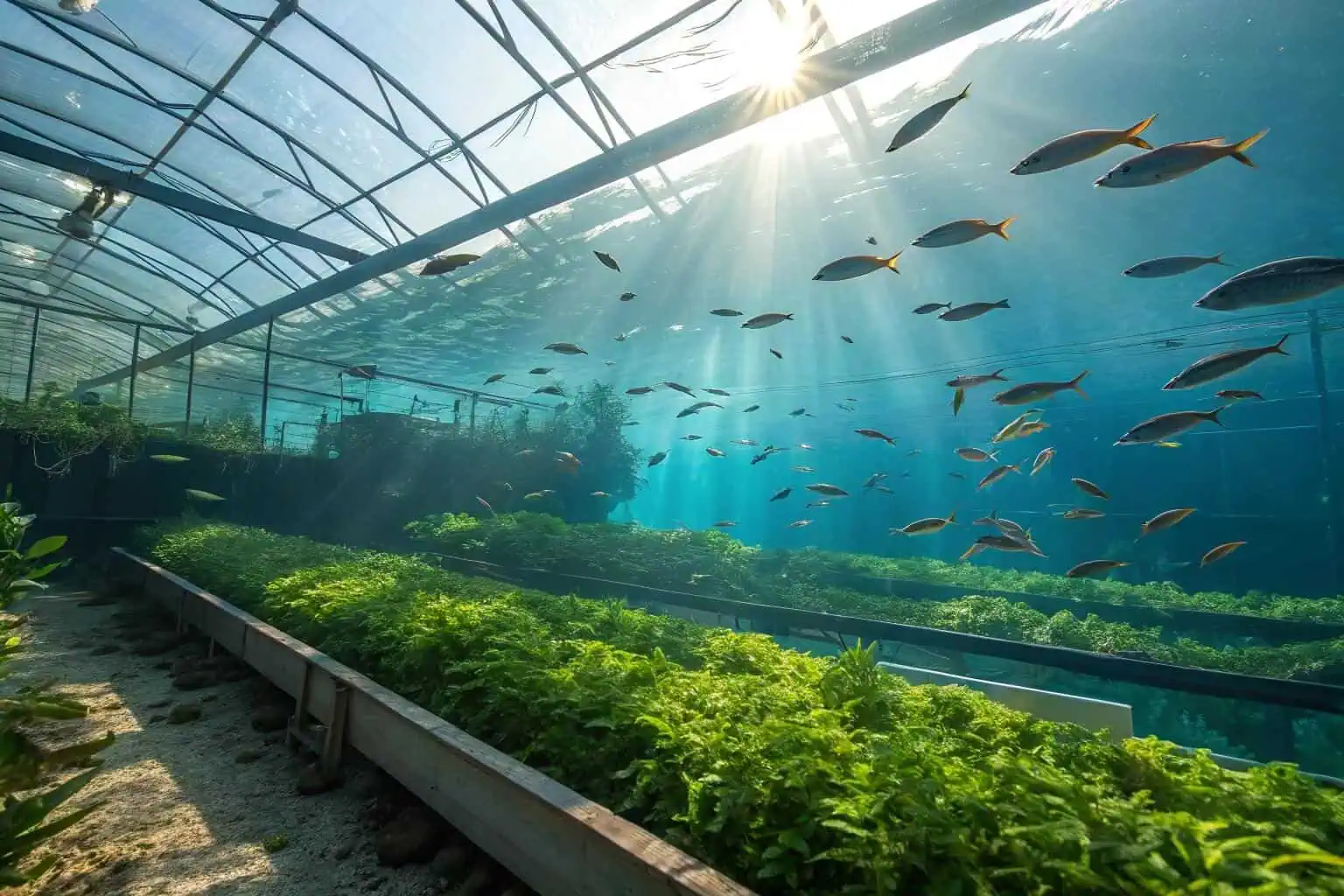
Now that we have a general idea, let's look closer at different parts of aquaculture care. I've learned that keeping things running smoothly is key, and it doesn't have to be a constant struggle. As someone who works in this field every day, I want to share what I know.
What is the maintenance of an aquarium?
Your home aquarium water is cloudy, or your fish seem unwell. This is worrying. If you don't act, you could lose your fish, and the tank might start to smell. Simple, regular care keeps your aquarium buddies happy.
Aquarium care mostly involves changing water regularly, cleaning the gravel and filter, and watching your fish for health. This keeps their small world stable and good for them to live in.
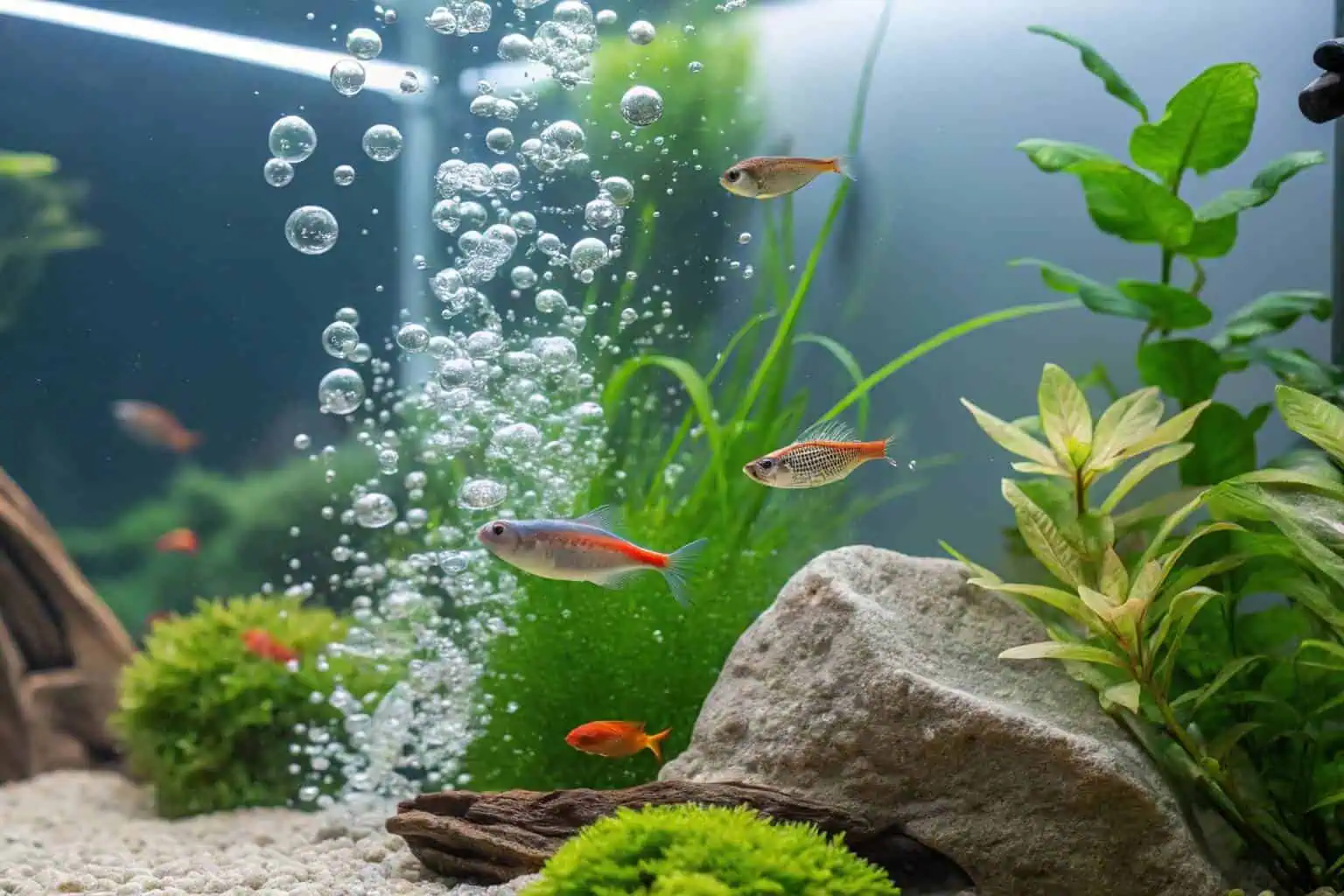
Taking care of an aquarium is like managing a mini ecosystem1. I've found that consistency is the most important part. Even though my work at Bancy often involves much larger systems like our collapsible fish ponds, the basic rules of water quality2 and habitat upkeep3 are surprisingly similar.
Key Aquarium Cleaning Routines
A clean tank is a healthy tank. You should plan to change about 20-25% of the water4 every week. This removes nitrates and replaces trace elements. When you change the water, it's a good time to clean the gravel or sand with a siphon5. This gets rid of fish waste and uneaten food. The filter is also very important. I usually rinse the filter media in some of the removed tank water6 about once a month. Using tap water can kill the good bacteria.
Water Parameter Monitoring
Fish are very sensitive to their water. So, you need to test your water regularly. Key things to check are ammonia7, nitrite, nitrate, and pH levels8. Ammonia and nitrite are very toxic and should always be zero in a cycled tank. High nitrates can stress fish. You can buy simple test kits for this. Knowing these levels helps you understand if your tank is healthy or if you need to make changes. For example, high nitrate9s might mean you're overfeeding or need more frequent water changes.
Equipment Checks and Fish Observation
Your aquarium equipment needs to work right all the time. Check your heater daily to make sure the temperature is stable for your fish. The filter pump should always be running smoothly. Lights usually need to be on a timer for about 8-10 hours a day. Also, watch your fish every day. Look for changes in behavior, appetite, or appearance. Catching problems early makes them much easier to fix.
| Task Frequency | Action Item | Why It's Important |
|---|---|---|
| Daily | Check fish behavior/health10 | Early detection of illness or stress |
| Daily | Check water temperature11 | Ensures stable environment for fish |
| Weekly | 20-25% Water change | Removes toxins, replenishes minerals |
| Weekly | Clean algae from glass | Maintains visibility and aesthetics |
| Weekly | Test key water parameters12 | Monitors chemical balance of water |
| Monthly | Clean filter media (gently) | Removes debris, preserves beneficial bacteria |
| Monthly | Prune live plants (if any) | Promotes healthy growth, removes decay |
What is the main problem in aquaculture?
Thinking about starting in aquaculture? It looks like a good idea but also feels risky. Hidden issues can wipe out your fish and your money very fast. Knowing the big challenges helps you get ready and reduce these risks.
The biggest issues in aquaculture are bad water quality, fish diseases, managing feed, and effects on the environment. Dealing with these early is crucial for a good and lasting aquaculture business.
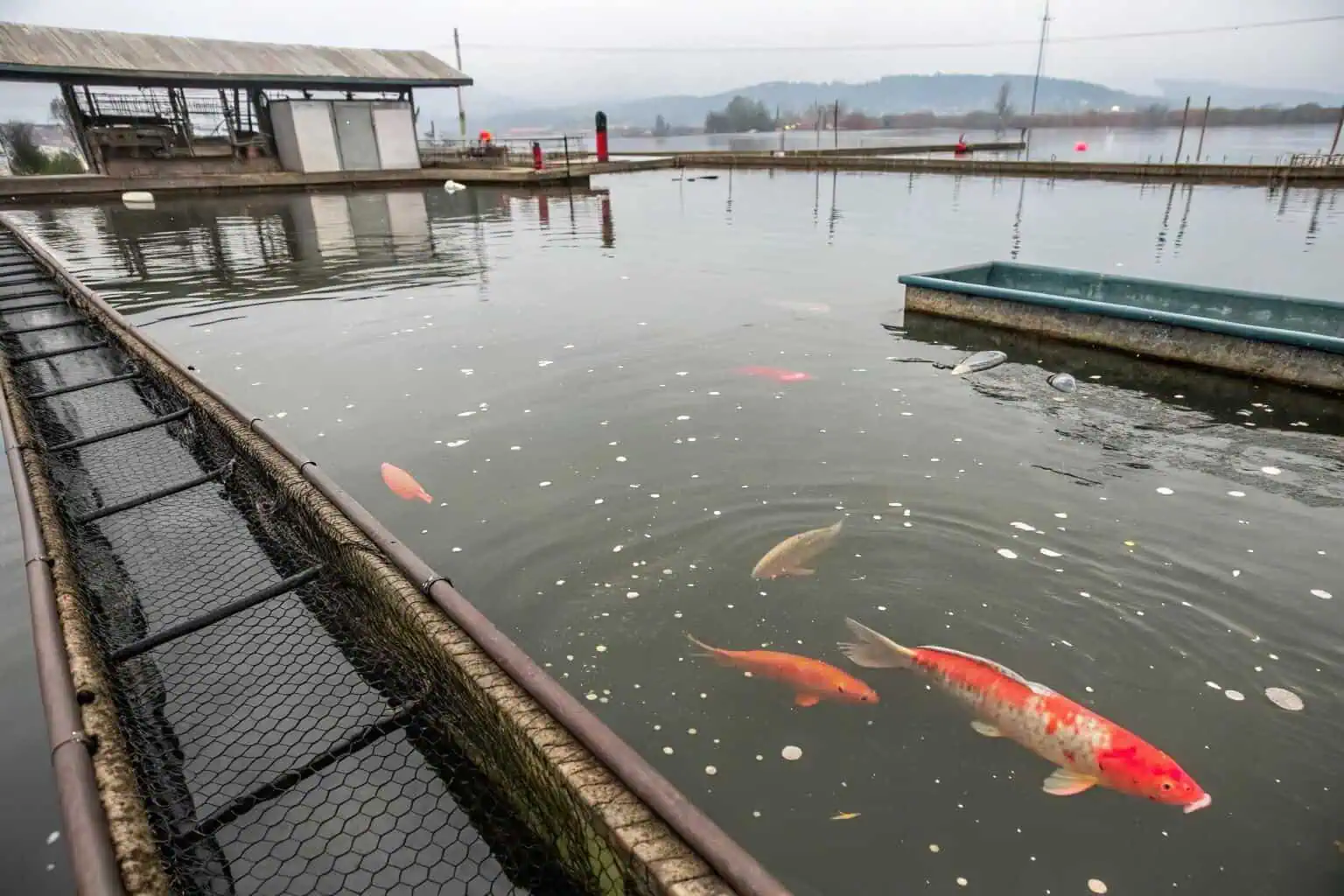
From my own experience in this industry, these problems are very real. I’ve faced them myself – poor water quality and the threat of disease are constant battles. This is a big reason why at Bancy, we work hard to offer solutions that can help, like our easy-to-clean collapsible fish ponds that make managing water simpler.
Battling Water Quality Issues
Water is everything in aquaculture. If the water is bad, your fish will suffer. The main things that mess up water quality are fish waste and leftover food. These break down and produce ammonia, which is toxic. You need good filtration and aeration13. Regular water testing for things like oxygen levels, pH, ammonia, and nitrites is a must. In some of my earlier projects, before using more manageable systems, maintaining water quality in large earthen ponds was a huge daily effort. This taught me the value of systems that are easier to manage, like the PVC-lined ponds we offer at Bancy, which can be cleaned more thoroughly.
Disease Prevention and Management
Fish diseases can spread quickly and cause big losses. Stress from poor water quality, overcrowding, or bad food makes fish more likely to get sick. The best way to fight disease is to prevent it. This means good biosecurity14 – like quarantining new fish before adding them to your main stock. Also, keeping the environment clean and stable helps a lot. If a disease does show up, you need to act fast with the right treatment. I've learned that quick identification and response can save a whole stock.
Sustainable Feed and Environmental Concerns
Feed is usually the biggest cost in aquaculture. You need to give your fish the right food for them to grow well. But, uneaten feed pollutes the water. So, managing feeding carefully is important. There's also a bigger picture: where does the feed come from? Using sustainable feed sources15 is becoming more critical. Aquaculture can also affect the local environment if waste isn't managed properly. This is something I think about a lot. We need to find ways to grow food responsibly. For instance, our Bancy team often discusses how tank design, even for our collapsible fish tanks, can help in managing waste output more effectively.
| Problem Area | Common Issue | Potential Solution / Bancy's Approach |
|---|---|---|
| Water Quality | Ammonia/Nitrite buildup, low oxygen | Regular monitoring, proper aeration, efficient filtration16. Bancy's easy-clean tanks help. |
| Disease | Bacterial, fungal, or parasitic infections | Biosecurity, stress reduction, quarantine. Durable, non-toxic materials in Bancy tanks reduce stress. |
| Feed Management | Overfeeding, high cost, unsustainable sources | Optimized feeding schedules, high-quality feed. Efficient tank design can help monitor feed intake. |
| Environmental Impact | Waste discharge, habitat alteration | Responsible site selection, waste treatment. Bancy promotes contained systems. |
What is the maintenance of a fish pond?
Your fish pond might look more like a muddy puddle than a healthy home for fish. This is a common worry. A neglected pond can lead to sick fish and just look bad. But with regular care, your fish pond can be clean and full of life.
Fish pond care includes managing water levels and quality, controlling algae and weeds, keeping pumps and filters working, and making sure fish are healthy by feeding them right and watching them closely.
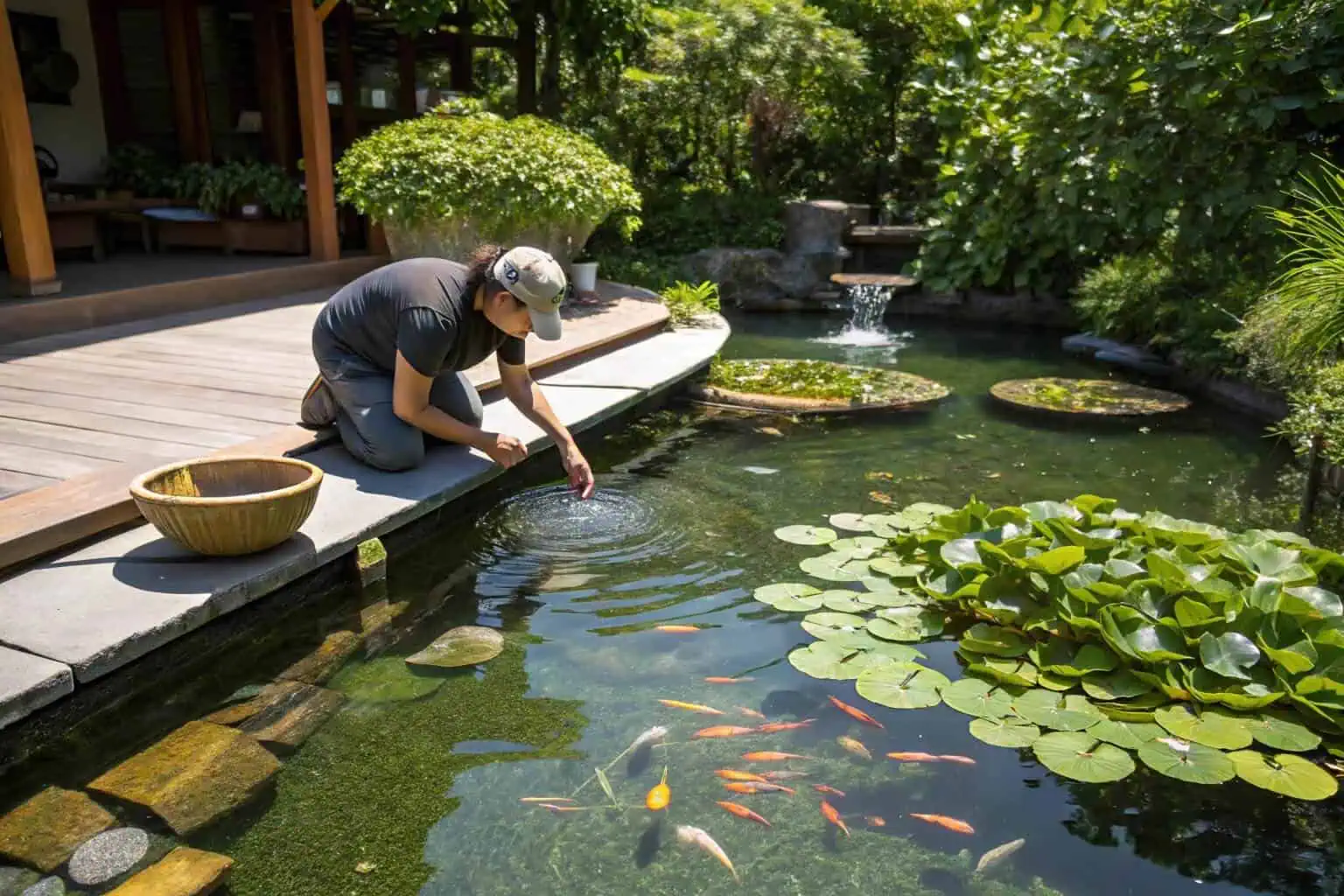
Whether it's a small garden pond or a larger setup for raising fish, the basics of care are pretty much the same. This understanding helps us at Bancy when we design our products. For example, our collapsible fish ponds use durable PVC liners and strong frame systems (we offer galvanized pipe, galvanized sheet, or plastic options) because we know easy maintenance and reliability are key for pond owners.
Water Quality Management in Ponds
Just like in an aquarium, water quality is vital for a fish pond. You should test the water for pH, ammonia, and nitrite, especially in a new pond or if you see problems. Partial water changes, maybe 10-20% every few weeks, can help refresh the water. If you have a pump and filter, make sure they are working right to keep the water moving and clean. Aeration, like from a fountain or a bubbler, adds oxygen, which is very important for fish, especially in warm weather. I always tell people that healthy water means healthy fish.
Controlling Unwanted Growth
Algae and weeds can quickly take over a pond if you let them. A little algae is normal, but too much can use up oxygen at night and look bad. You can remove string algae by hand with a net or a brush. For green water (suspended algae), a UV clarifier17 can work wonders if your pond has a filtration system. Aquatic plants are good, but some can be invasive. It's best to remove excess weeds manually. I try to avoid using too many chemicals because they can harm fish or other wildlife.
Equipment and Structural Care
If your pond has equipment like pumps, filters, or skimmers, they need regular checks. Clean out pump intakes and filter pads often so they don’t get clogged. Skimmers collect leaves and debris from the surface and should be emptied regularly. Also, check the pond edges and liner for any damage or leaks. A small leak can become a big problem. For our Bancy collapsible ponds, the PVC material we use is tough, but it’s still good practice to ensure the ground is clear of sharp objects before setup. The sturdy frames are designed for longevity.
| Season | Key Maintenance Task | Details |
|---|---|---|
| Spring | Pond clean-out, equipment check | Remove winter debris, restart pumps/filters, check for leaks. |
| Summer | Monitor water levels, control algae | Top up water due to evaporation, manage algae growth18, ensure aeration. |
| Autumn | Remove falling leaves, prepare for winter | Use netting to catch leaves, reduce feeding as temperatures drop. |
| Winter | Prevent freezing (if needed), minimal feeding | Use a pond de-icer in cold climates, feed fish sparingly or not at all. |
What is the primary purpose of aquaculture?
Many people think aquaculture is just about farming fish to make money. This view is too simple. It misses the wider importance and what it can do. Understanding why we really do aquaculture shows its key role around the world.
The main goal of aquaculture is to grow aquatic animals and plants for people to eat. This helps make sure there's enough food for everyone. It also tries to ease the pressure on wild fish in the oceans and supports local economies.
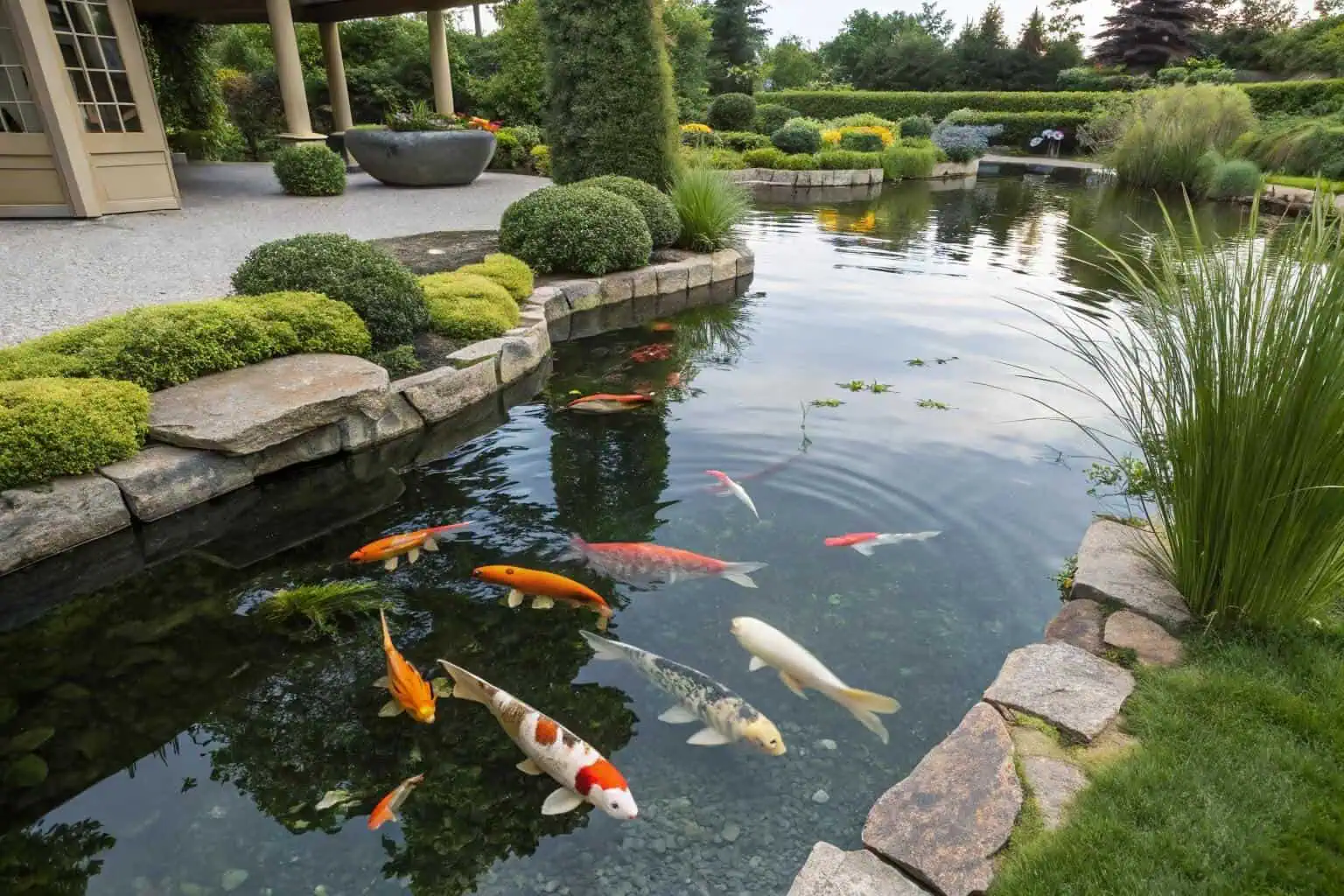
For me, and for us at Bancy, aquaculture is much more than just a business. It's about producing food in a responsible way and taking care of our environment. I truly believe we are helping to build a more sustainable future. I've learned firsthand that success in this field depends on careful maintenance and a strong will to solve challenges like water quality issues and disease. This is why, at Bancy, we focus on making equipment that is durable and works well. Our collapsible fish ponds19, with their strong PVC liners and reliable frames, are designed to support fellow aquaculturists. My daily work, whether it's talking to clients about their needs for a custom tank or checking on our production quality, is driven by this. The goal is to make aquaculture more efficient and greener, contributing positively.
Feeding a Growing World Population
The world needs more food every year. Traditional fishing from oceans and rivers can't keep up with the demand; many wild fish stocks are already overfished. Aquaculture provides a way to produce more seafood in a controlled way. It helps to fill the gap and ensures that protein-rich food is available to more people. When I see a successful harvest from one of our client's farms using Bancy tanks, I know it’s contributing to this global need.
Conserving Wild Fish Stocks
By farming fish, we can reduce the need to catch fish from the wild. This gives wild populations a chance to recover. Sustainable aquaculture practices are very important here. We must make sure that fish farms don't harm the environment around them. It's a balance. I often think about how our products at Bancy, like specialized hatchery tanks20 or quarantine systems [1], can play a small part in supporting responsible breeding programs that might even help restock wild populations.
Economic and Community Development
Aquaculture creates jobs. It provides income for people, especially in coastal and rural areas where other jobs might be scarce. This can be for small family farms or large commercial operations. It supports local communities and contributes to the economy. As a manufacturer in China, Bancy is part of this chain, supplying equipment globally. We see how aquaculture projects can transform local economies. It’s rewarding to know that our efforts help others build their livelihoods. This aligns with my personal belief that aquaculture is about finding a way for humans and nature to thrive together.
| Aspect | Aquaculture21 | Traditional Wild-Catch Fishing |
|---|---|---|
| Food Supply | Controlled, predictable production volume | Declining stocks, unpredictable catch sizes |
| Environmental Impact | Potential for localized impact; focus on sustainability | Overfishing, bycatch, habitat destruction |
| Species Selection | Can focus on fast-growing, efficient species | Limited to available wild species |
| Economic Scalability | Can be scaled from small to large operations | Often limited by natural resource availability |
Conclusion
Keeping up with aquaculture, from a small tank to a big pond, means healthy fish and good methods. This gives us food and helps our planet.
-
Managing a mini ecosystem is key to aquarium success. Discover more about creating a balanced environment for your fish. ↩
-
Understanding water quality is crucial for a healthy aquarium. Explore this link to learn effective maintenance tips. ↩
-
Proper habitat upkeep is essential for fish health. This resource will provide you with valuable insights and techniques. ↩
-
Understanding the benefits of regular water changes can help you maintain a healthier aquarium environment. ↩
-
Learning the proper siphoning technique ensures effective cleaning, promoting a healthier habitat for your fish. ↩
-
Discovering the right way to maintain filter media can enhance your tank's filtration and support beneficial bacteria. ↩
-
Understanding ammonia's impact on fish health is crucial for maintaining a safe aquatic environment. Explore this link for detailed insights. ↩
-
pH levels are vital for fish health and tank stability. Learn more about maintaining the right pH for your aquatic pets. ↩
-
High nitrate levels can stress fish, leading to health issues. Discover more about managing nitrate levels for a healthier tank. ↩
-
Monitoring fish behavior is crucial for early detection of stress or illness, ensuring their well-being. ↩
-
Understanding the significance of water temperature can help maintain a healthy environment for your fish. ↩
-
Learning about essential water parameters ensures your aquarium remains balanced and fish thrive. ↩
-
Effective filtration and aeration are vital for fish health. Discover the best systems to enhance your aquaculture setup. ↩
-
Understanding biosecurity measures is crucial for preventing fish diseases and protecting your stock. ↩
-
Exploring sustainable feed sources can help you understand how to reduce environmental impact and improve fish health. ↩
-
Learn how efficient filtration systems can enhance water quality, leading to healthier fish and better yields. ↩
-
Explore this link to understand how a UV clarifier can effectively manage algae in your pond, ensuring a healthier aquatic environment. ↩
-
Controlling algae is essential for pond clarity and fish health. Learn proven strategies to manage algae effectively. ↩
-
Discover the benefits of collapsible fish ponds, including their efficiency and ease of use, which can enhance aquaculture practices. ↩
-
Learning about specialized hatchery tanks can provide insights into their role in sustainable fish farming and conservation efforts. ↩
-
Exploring this resource will provide insights into how aquaculture boosts local economies and creates job opportunities. ↩